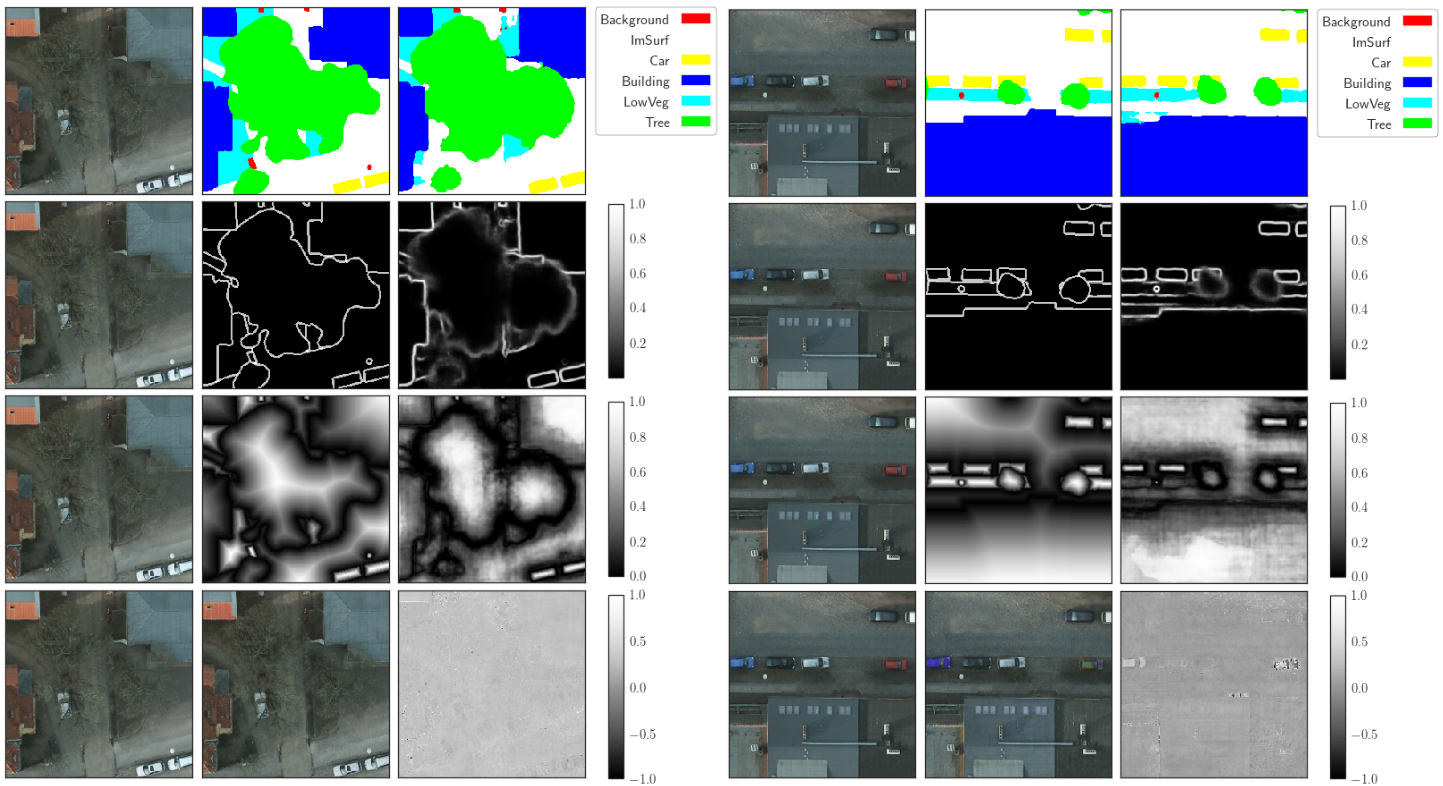This repository contains source code for some of the models used in the manuscript of the (ResUNet-a) paper. ResUNet-a is built with the mxnet DL framework, under the gluon api.
- mxnet (latest version, tests run with mxnet_cu92-1.5.0b20190613)
- opencv
- rasterio
- glob
- pathos
- ISPRS Potsdam data that should be appropriately preprocessed (slices of 256x256 patches).
Complete models live in the models directory, specifically models d6 and d7 (conditioned multitasking).
These are built from modules that are alive in resuneta/nn directory. The Tanimoto loss function (with complement) is defined in file resuneta/nn/loss/loss.py Inference demo (.ipynb) can be found in directory demo. Currently, we do not provide pre-trained weights (will do so in the immediate future). Directory nn contains all necessary modules for building resuneta models. Directort src is related to dataset definitions. In addition, file src/chopchop_run.py is an executable that produces slices of patches in size 256x256 from the original data. Please see the source code for modifications based on your directory structures.
├── demo
├── images
├── models
├── nn
│ ├── BBlocks
│ ├── layers
│ ├── loss
│ ├── pooling
│ └── Units
└── src
See also demo/*.ipynb
In [1]: from resuneta.models.resunet_d7_causal_mtskcolor_ddist import *
...: from mxnet import nd
...:
In [2]: Nfilters_init = 32
...: NClasses = 6
...: net = ResUNet_d7(Nfilters_init,NClasses)
...: net.initialize()
...:
depth:= 0, nfilters: 32
depth:= 1, nfilters: 64
depth:= 2, nfilters: 128
depth:= 3, nfilters: 256
depth:= 4, nfilters: 512
depth:= 5, nfilters: 1024
depth:= 6, nfilters: 2048
depth:= 7, nfilters: 1024
depth:= 8, nfilters: 512
depth:= 9, nfilters: 256
depth:= 10, nfilters: 128
depth:= 11, nfilters: 64
depth:= 12, nfilters: 32
In [3]: xx = nd.random.uniform(shape=[1,5,256,256])
In [4]: out = net(xx)CSIRO BSTD/MIT LICENSE
As a condition of this licence, you agree that where you make any adaptations, modifications, further developments, or additional features available to CSIRO or the public in connection with your access to the Software, you do so on the terms of the BSD 3-Clause Licence template, a copy available at: http://opensource.org/licenses/BSD-3-Clause.
If you find the contents of this repository useful for your research, please cite:
@article{DBLP:journals/corr/abs-1904-00592,
author = {Foivos I. Diakogiannis and
Fran{\c{c}}ois Waldner and
Peter Caccetta and
Chen Wu},
title = {ResUNet-a: a deep learning framework for semantic segmentation of
remotely sensed data},
journal = {CoRR},
volume = {abs/1904.00592},
year = {2019},
url = {http://arxiv.org/abs/1904.00592},
archivePrefix = {arXiv},
eprint = {1904.00592},
timestamp = {Wed, 24 Apr 2019 12:21:25 +0200},
biburl = {https://dblp.org/rec/bib/journals/corr/abs-1904-00592},
bibsource = {dblp computer science bibliography, https://dblp.org}
}

